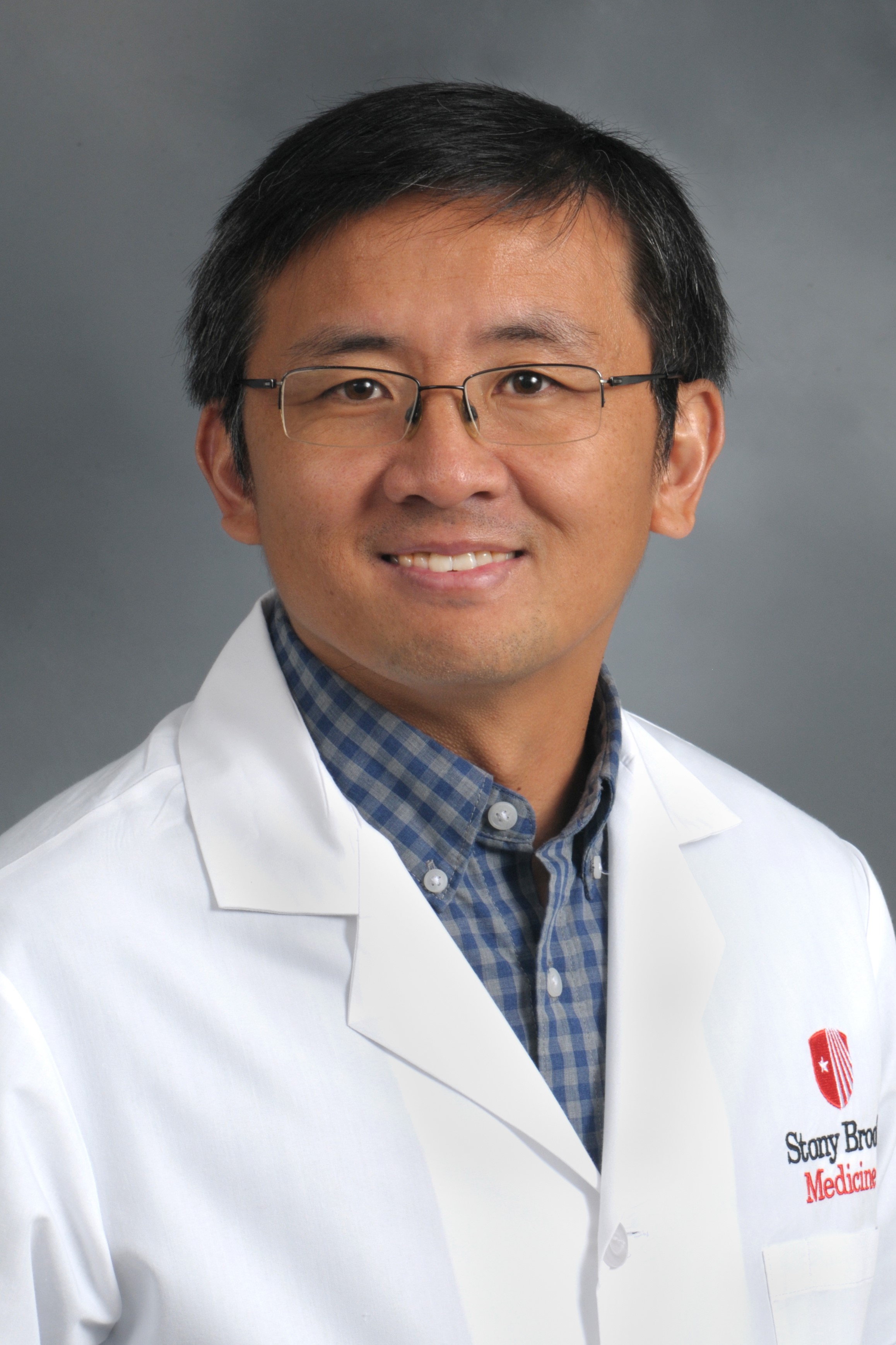Peng Mao, PhD
Associate Professor
Stony Brook Cancer Center
Basic Sciences Tower, Level 9
Stony Brook Medicine
Stony Brook, NY 11794-8691
E-mail: peng.mao@stonybrookmedicine.edu
Research Interests:
The Mao lab uses next-generation sequencing (NGS) and bioinformatics methods to study where DNA damage is formed in the genome and how it is repaired. Current research interests include: (1) How do DNA repair proteins function in chromatin to remove DNA damage? (2) How does the transcription machinery, including transcription factors, elongating RNA polymerase, and histone modification enzymes, impact different DNA repair pathways? (3) How do cancer cells selectively modulate DNA repair pathways to tolerate chemotherapeutic agents? Addressing these questions will not only provide new insights into the fundamental mechanism of DNA repair systems, but shed light on new strategies to sensitize drug-resistant tumors by inhibiting specific DNA repair pathways. Lab website: https://sites.google.com/view/mao-lab/home
| Education: | ||
| Institution and Location | Degree | Year |
| Huazhong University of Science and Technology, China | B.S. | 2002 |
| Peking University, China | Ph. D. | 2007 |
| Washington State University, Pullman, WA | Post Doc | 2014 |
Positions and Employment: |
|
| 2014-2019 | Research Assistant Professor, Washington State University, Pullman, WA |
| 2019-2024 | Assistant Professor, University of New Mexico, Albuquerque, NM |
| 2024-2024 | Associate Professor, University of New Mexico, Albuquerque, NM |
| 2024-present | Associate Professor, Stony Brook University, Stony Brook, NY |
Other Experience and Professional Memberships (selected): |
|
| 2021-present | The Environmental Mutagenesis and Genomics Society (EMGS) |
| 2022-present | The American Society for Photobiology (ASP) |
| 2022-present | Environmental and Molecular Mutagenesis (EMM) Publication Policy Committee |
|
Selected Publications: |
|
|
1. Duan, M., Song, S., Wasserman, H., Lee, P.-H., Liu, K.J., Gordân, R., He, Y., and Mao, P. (2024). High UV damage and low repair, but not cytosine deamination, stimulate mutation hotspots at ETS binding sites in melanoma. Proceedings of the National Academy of Sciences 121, e2310854121. 2. Duan M, Leng SG*, Mao P*. Cisplatin in the era of PARP inhibitors and immunotherapy. Pharmacology & Therapeutics 258, 108642
3. Hoag, A., Duan, M., and Mao, P. (2023). The Role of TFIIH Complex in Nucleotide Excision Repair. Environmental and Molecular Mutagenesis, doi: 10.1002/em.22568.
4. Bohm, K.A., Morledge-Hampton, B., Stevison, S., Mao, P., Roberts, S.A., and Wyrick, J.J. (2023). Genome-wide maps of rare and atypical UV photoproducts reveal distinct patterns of damage formation and mutagenesis in yeast chromatin. Proceedings of the National Academy of Sciences 120, e2216907120.
5. Yu, H., Ness, S., Li, C.-I., Bai, Y., Mao, P., and Guo, Y. (2022). Surveying mutation density patterns around specific genomic features. Genome research 32, 1930–1940.
6. Duan, M., Sivapragasam, S., Antony, J.S., Ulibarri, J., Hinz, J.M., Poon, G.M., Wyrick, J.J*., and Mao, P*. (2022). High-resolution mapping demonstrates inhibition of DNA excision repair by transcription factors. Elife 11, e73943.
7. Sivapragasam, S., Stark, B., Albrecht, A.V., Bohm, K.A., Mao, P., Emehiser, R.G., Roberts, S.A., Hrdlicka, P.J., Poon, G.M., and Wyrick, J.J. (2021). CTCF binding modulates UV damage formation to promote mutation hot spots in melanoma. The EMBO journal 40, e107795.
8. Sheng, Q., Yu, H., Duan, M., Ness, S., He, J., Kang, H., Jiang, L., Wyrick, J.J., Mao, P*., and Guo, Y*. (2021). A streamlined solution for processing, elucidating and quality control of cyclobutane pyrimidine dimer sequencing data. Nature protocols 16, 2190–2212.
9. Duan, M., Selvam, K., Wyrick, J.J*., and Mao, P*. (2020). Genome-wide role of Rad26 in promoting transcription-coupled nucleotide excision repair in yeast chromatin. Proceedings of the National Academy of Sciences 117, 18608–18616.
10. Mao, P., Brown, A.J., Esaki, S., Lockwood, S., Poon, G.M., Smerdon, M.J., Roberts, S.A., and Wyrick, J.J. (2018). ETS transcription factors induce a unique UV damage signature that drives recurrent mutagenesis in melanoma. Nature communications 9, 2626.
11. Mao, P., Smerdon, M.J., Roberts, S.A., and Wyrick, J.J. (2016). Chromosomal landscape of UV damage formation and repair at single-nucleotide resolution. Proceedings of the National Academy of Sciences 113, 9057–9062.
12. Mao, P., Meas, R., Dorgan, K.M., and Smerdon, M.J. (2014). UV damage-induced RNA polymerase II stalling stimulates H2B deubiquitylation. Proceedings of the National Academy of Sciences 111, 12811–12816. |
|

